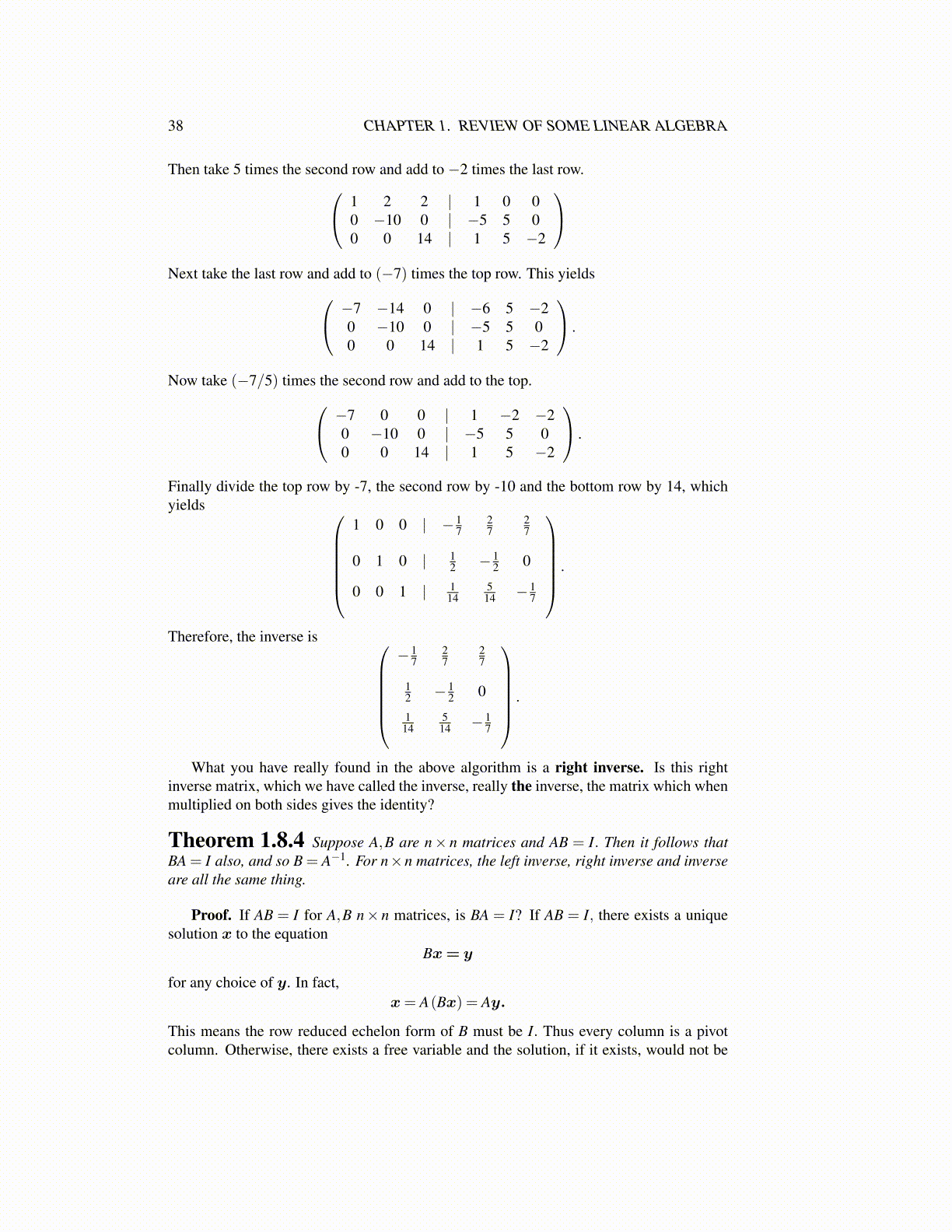
38 CHAPTER 1. REVIEW OF SOME LINEAR ALGEBRA
Then take 5 times the second row and add to −2 times the last row. 1 2 2 | 1 0 00 −10 0 | −5 5 00 0 14 | 1 5 −2
Next take the last row and add to (−7) times the top row. This yields −7 −14 0 | −6 5 −2
0 −10 0 | −5 5 00 0 14 | 1 5 −2
.
Now take (−7/5) times the second row and add to the top. −7 0 0 | 1 −2 −20 −10 0 | −5 5 00 0 14 | 1 5 −2
.
Finally divide the top row by -7, the second row by -10 and the bottom row by 14, whichyields
1 0 0 | − 17
27
27
0 1 0 | 12 − 1
2 0
0 0 1 | 114
514 − 1
7
.
Therefore, the inverse is − 1
727
27
12 − 1
2 0
114
514 − 1
7
.
What you have really found in the above algorithm is a right inverse. Is this rightinverse matrix, which we have called the inverse, really the inverse, the matrix which whenmultiplied on both sides gives the identity?
Theorem 1.8.4 Suppose A,B are n× n matrices and AB = I. Then it follows thatBA = I also, and so B = A−1. For n×n matrices, the left inverse, right inverse and inverseare all the same thing.
Proof. If AB = I for A,B n× n matrices, is BA = I? If AB = I, there exists a uniquesolution x to the equation
Bx= y
for any choice of y. In fact,x= A(Bx) = Ay.
This means the row reduced echelon form of B must be I. Thus every column is a pivotcolumn. Otherwise, there exists a free variable and the solution, if it exists, would not be